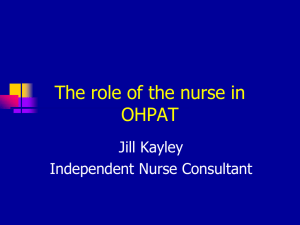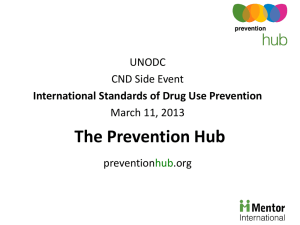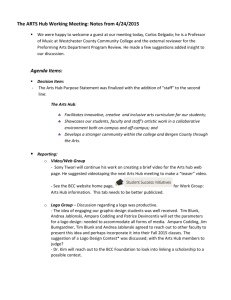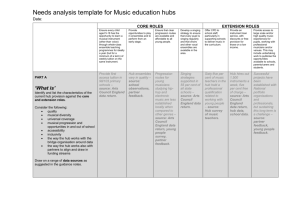MicroClinic_1pg_public
advertisement
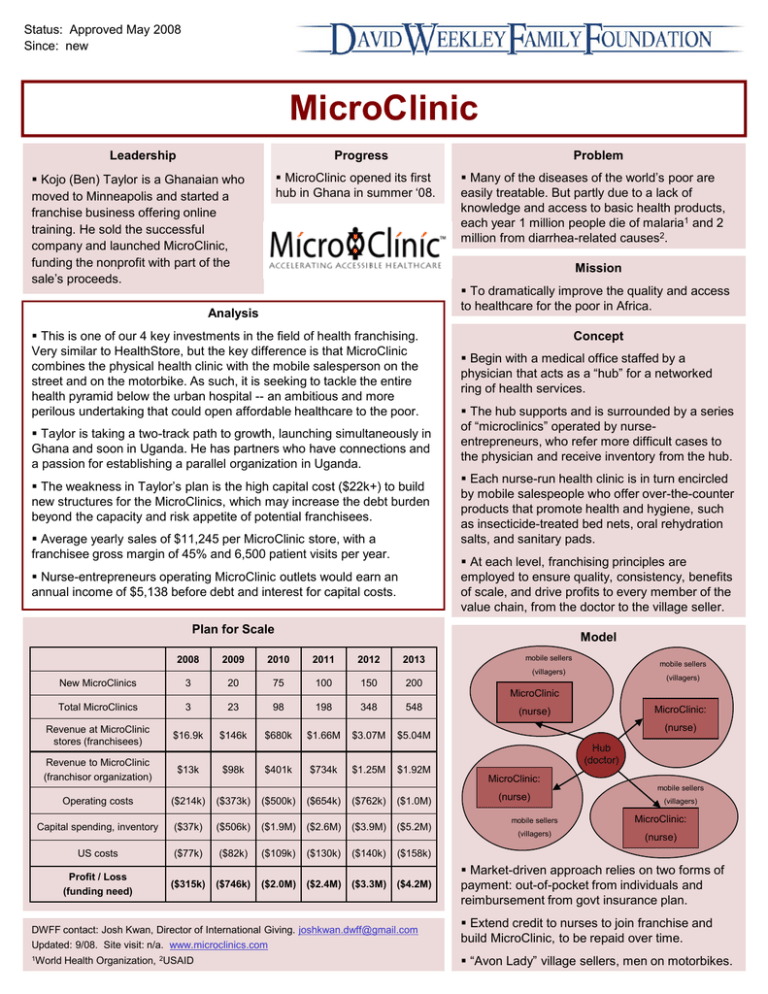
Status: Approved May 2008 Since: new MicroClinic Progress Leadership Problem MicroClinic opened its first hub in Ghana in summer ‘08. Kojo (Ben) Taylor is a Ghanaian who moved to Minneapolis and started a franchise business offering online training. He sold the successful company and launched MicroClinic, funding the nonprofit with part of the sale’s proceeds. Many of the diseases of the world’s poor are easily treatable. But partly due to a lack of knowledge and access to basic health products, each year 1 million people die of malaria1 and 2 million from diarrhea-related causes2. Mission To dramatically improve the quality and access to healthcare for the poor in Africa. Analysis This is one of our 4 key investments in the field of health franchising. Very similar to HealthStore, but the key difference is that MicroClinic combines the physical health clinic with the mobile salesperson on the street and on the motorbike. As such, it is seeking to tackle the entire health pyramid below the urban hospital -- an ambitious and more perilous undertaking that could open affordable healthcare to the poor. Taylor is taking a two-track path to growth, launching simultaneously in Ghana and soon in Uganda. He has partners who have connections and a passion for establishing a parallel organization in Uganda. The weakness in Taylor’s plan is the high capital cost ($22k+) to build new structures for the MicroClinics, which may increase the debt burden beyond the capacity and risk appetite of potential franchisees. Average yearly sales of $11,245 per MicroClinic store, with a franchisee gross margin of 45% and 6,500 patient visits per year. Concept Begin with a medical office staffed by a physician that acts as a “hub” for a networked ring of health services. The hub supports and is surrounded by a series of “microclinics” operated by nurseentrepreneurs, who refer more difficult cases to the physician and receive inventory from the hub. Each nurse-run health clinic is in turn encircled by mobile salespeople who offer over-the-counter products that promote health and hygiene, such as insecticide-treated bed nets, oral rehydration salts, and sanitary pads. At each level, franchising principles are employed to ensure quality, consistency, benefits of scale, and drive profits to every member of the value chain, from the doctor to the village seller. Nurse-entrepreneurs operating MicroClinic outlets would earn an annual income of $5,138 before debt and interest for capital costs. Plan for Scale 2008 2009 2010 Model 2011 2012 2013 mobile sellers mobile sellers (villagers) New MicroClinics 3 20 75 100 150 (villagers) 200 MicroClinic Total MicroClinics 3 23 98 198 348 548 Revenue at MicroClinic stores (franchisees) $16.9k $146k $680k $1.66M $3.07M $5.04M Revenue to MicroClinic (franchisor organization) $13k $98k $401k $734k $1.25M $1.92M Operating costs ($214k) ($373k) ($500k) ($654k) ($762k) ($1.0M) MicroClinic: (nurse) (nurse) Hub (doctor) MicroClinic: mobile sellers Capital spending, inventory ($37k) ($506k) ($1.9M) ($2.6M) ($3.9M) ($5.2M) US costs ($77k) ($82k) ($109k) ($130k) ($140k) ($158k) Profit / Loss (funding need) ($315k) ($746k) ($2.0M) ($2.4M) ($3.3M) ($4.2M) DWFF contact: Josh Kwan, Director of International Giving. joshkwan.dwff@gmail.com Updated: 9/08. Site visit: n/a. www.microclinics.com 1World Health Organization, 2USAID (nurse) (villagers) mobile sellers MicroClinic: (villagers) (nurse) Market-driven approach relies on two forms of payment: out-of-pocket from individuals and reimbursement from govt insurance plan. Extend credit to nurses to join franchise and build MicroClinic, to be repaid over time. “Avon Lady” village sellers, men on motorbikes.







